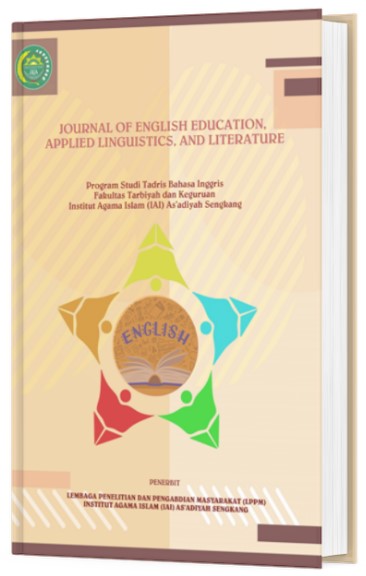SOCIOLINGUISTIC FEATURES AND CODE-SWITCHING PATTERNS AMONG BATAK COMMUNITIES IN NORTH SUMATRA: A QUALITATIVE ANALYSIS
CIRI SOSIOLINGUISTIK LAN POLA ALIH KODE ING MASYARAKAT BATAK ING SUMATERA UTARA
Keywords:
Batak language, code-switching, sociolinguistics, language maintenance, cultural identityAbstract
This study explores the sociolinguistic patterns and code-switching behav-ior among Batak communities in North Sumatra, Indonesia. The research investigates how cultural identity shapes language choice in various social contexts and examines the dynamic relationship between the Batak lan-guage and Indonesian as the national language. Through in-depth inter-views and participant observation in three selected communities repre-senting different Batak sub-ethnic groups (Toba, Karo, and Simalungun), this qualitative research identifies distinctive patterns of language mainte-nance and shift across generations. The findings reveal that socioeconom-ic status, educational background, and urbanization significantly influence code-switching behaviors, with older generations demonstrating stronger linguistic preservation tendencies compared to younger speakers. The study also identifies specific domains where the Batak language remains dominant despite increasing pressure from Indonesian and English. This research contributes to understanding minority language sustainability within multilingual societies and highlights the complex interplay between linguistic practices and cultural identity in rapidly changing socioeconomic landscapes. Implications for language preservation policy and educational approaches are discussed.
Downloads
References
Anderbeck, K. L. (2015). Portraits of language vitality: Language use patterns and attitudes among Karo speakers in North Sumatra. Wacana, 16(2), 358-382.
Androutsopoulos, J. (2010). Localizing the global on the participatory web. In N. Coupland (Ed.), The handbook of language and globalization (pp. 203-231). Wiley-Blackwell.
Androutsopoulos, J. (2013). Online Data Collection in Sociolinguistics: Designs, Methods and Ethics. In C. Mallinson, B. Childs, & G. Van Herk (Eds.). Data Collection in Sociolinguistics: Methods and Applications, 24(4), 236–249.
Arka, I. W. (2013). Language management and minority language maintenance in (eastern) Indonesia: Strategic issues. Lan-guage Documentation & Conservation, 7, 74-105. http://hdl.handle.net/10125/4571
Auer, P. (1999). From codeswitching via language mixing to fused lects: Toward a dynamic typology of bilingual speech. Interna-tional Journal of Bilingualism, 3(4), 309-332. https://doi.org/10.1177/13670069990030040101
Blommaert, J. (2018). Durkheim and the Internet: Sociolinguistics and the Sociological Imagination. Journal of Sociolinguistics, 22(4), 535–559.
Dovchin, S. (2020). The Sociolinguistics of Global Asianization: Digital Translingual Practice on YouTube. Multilingual Matters.
Blommaert, J. (2010). The sociolinguistics of globalization. Cam-bridge University Press.
Blommaert, J., & Jie, D. (2010). Ethnographic fieldwork: A beginner's guide. Multilingual Matters.
Blommaert, J., & Rampton, B. (2011). Language and superdiversity. Diversities, 13(2), 1-21.
Braun, V., & Clarke, V. (2006). Using thematic analysis in psycholo-gy. Qualitative Research in Psychology, 3(2), 77-101. https://doi.org/10.1191/1478088706qp063oa
Bucholtz, M., & Hall, K. (2005). Identity and interaction: A sociocul-tural linguistic approach. Discourse Studies, 7(4-5), 585-614. https://doi.org/10.1177/1461445605054407
Cohn, A. C., & Ravindranath, M. (2014). Local languages in Indone-sia: Language maintenance or language shift? Linguistik Indo-nesia, 32(2), 131-148. https://doi.org/10.26499/li.v32i2.24
Creswell, J. W., & Poth, C. N. (2018). Qualitative inquiry and re-search design: Choosing among five approaches (4th ed.). SAGE Publications.
Muhsyanur, M., Larisu, Z., Sanulita, H., Ertanti, D. W., & Widada, D. M. (2022). Indonesian netizens expressions potentially satire with the Covid-19 pandemic on social media Facebook. Linguistics and Culture Review, 6(1), 55–69. https://doi.org/10.21744/lingcure.v6n1.1942
Muhsyanur, Rahmatullah, A. S., Misnawati, Dumiyati, & Ghufron, S. (2021). The Effectiveness of “Facebook” As Indonesian Language Learning Media for Elementary School Student: Distance Learning Solutions in the Era of the COVID-19 Pandemic. Multicultural Education, 7(04), 38–47. https://www.mccaddogap.com/ojs/index.php/me/article/view/8%0Ahttps://www.mccaddogap.com/ojs/index.php/me/article/download/8/10
Downloads
Published
How to Cite
Issue
Section
License
Copyright (c) 2025 Sari Murni Simanjuntak, Toba Pardede

This work is licensed under a Creative Commons Attribution-ShareAlike 4.0 International License.







